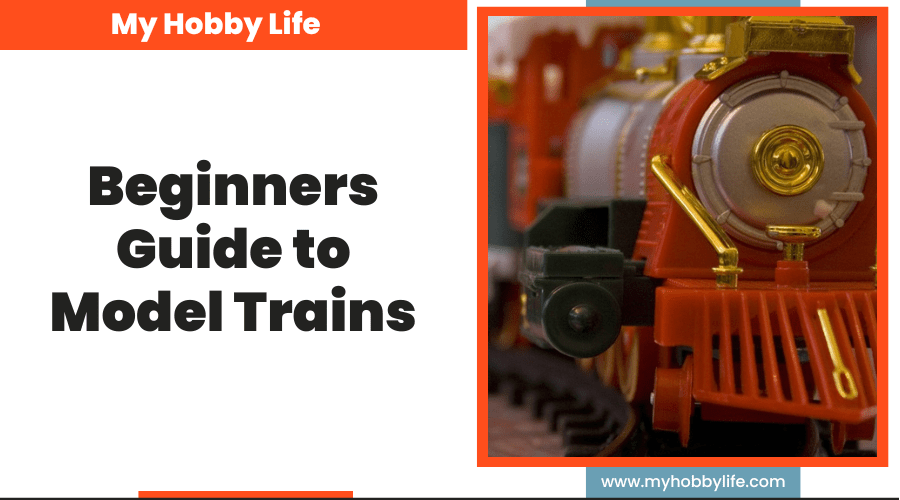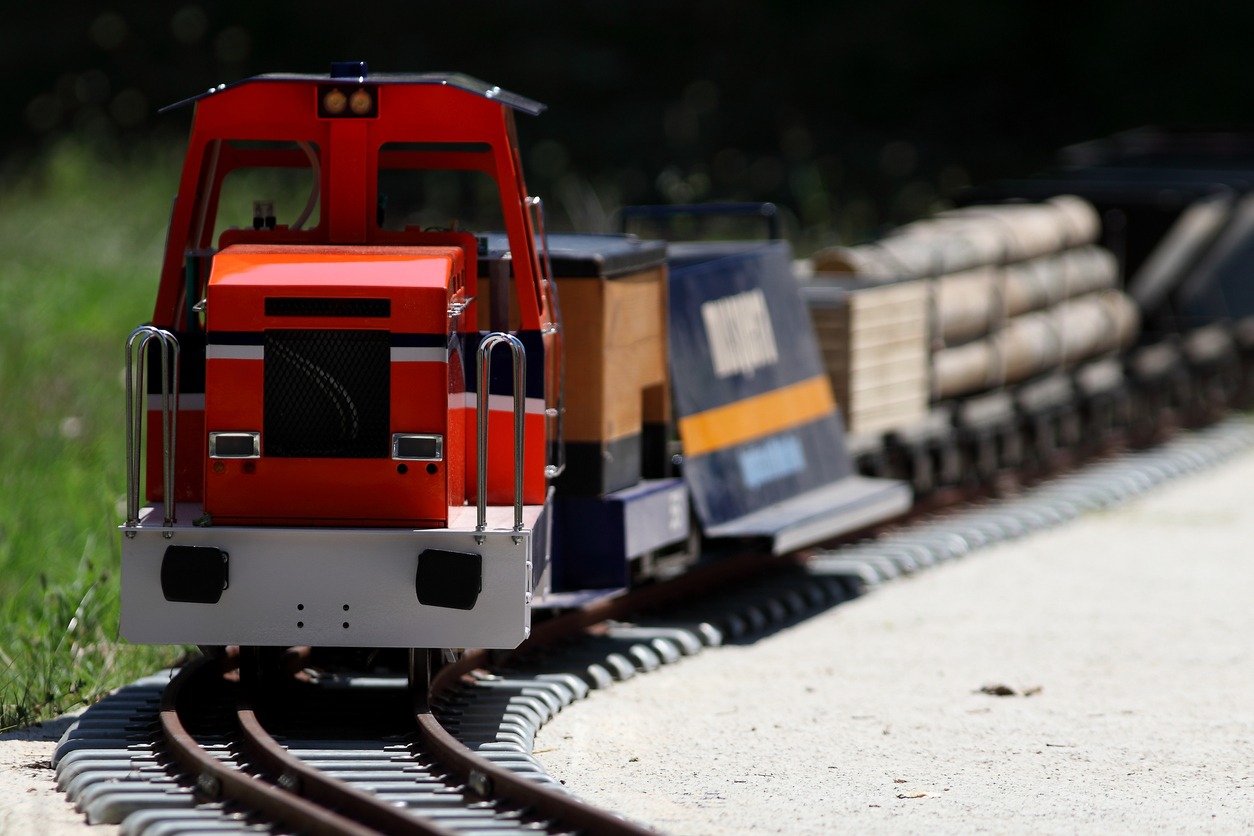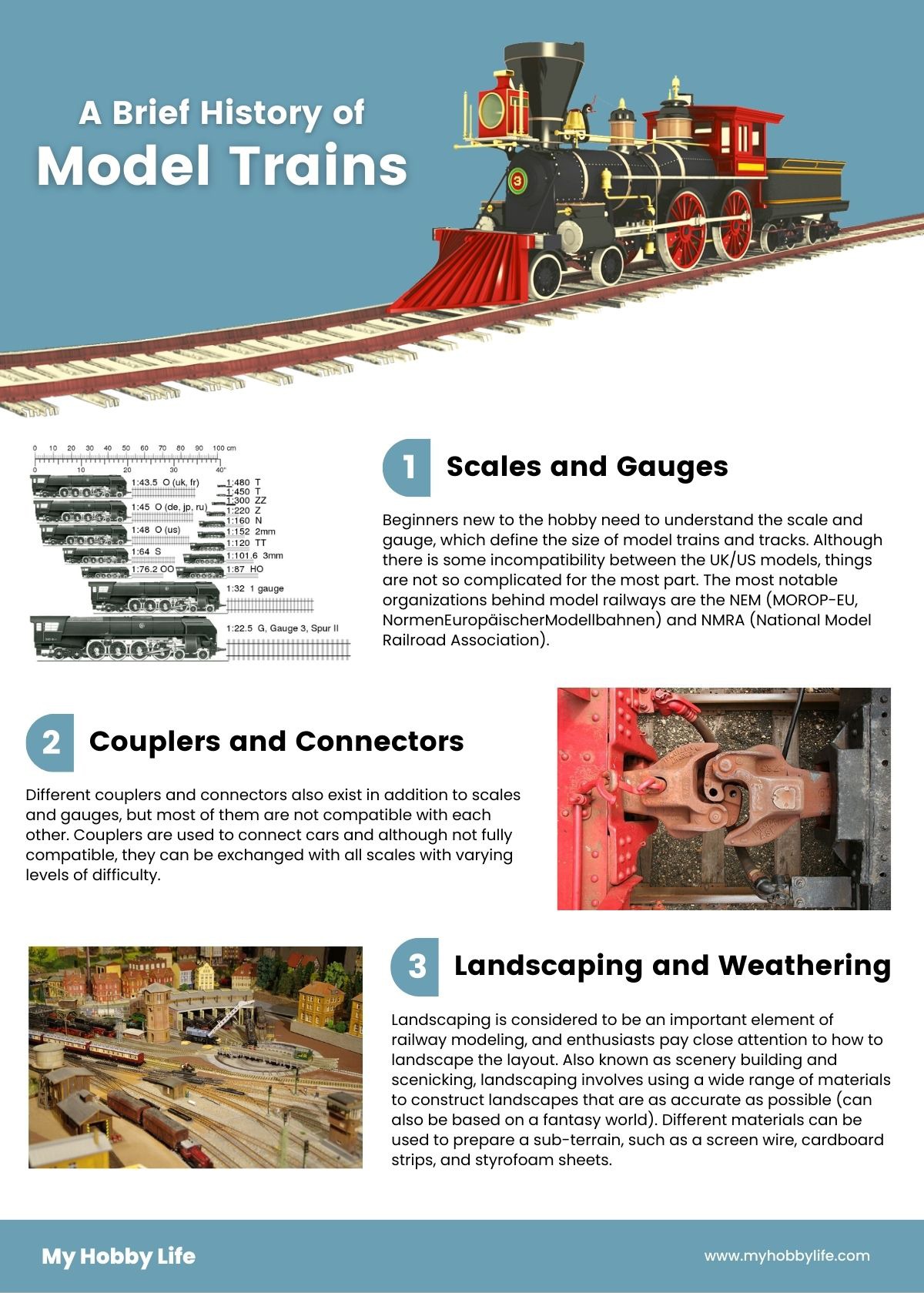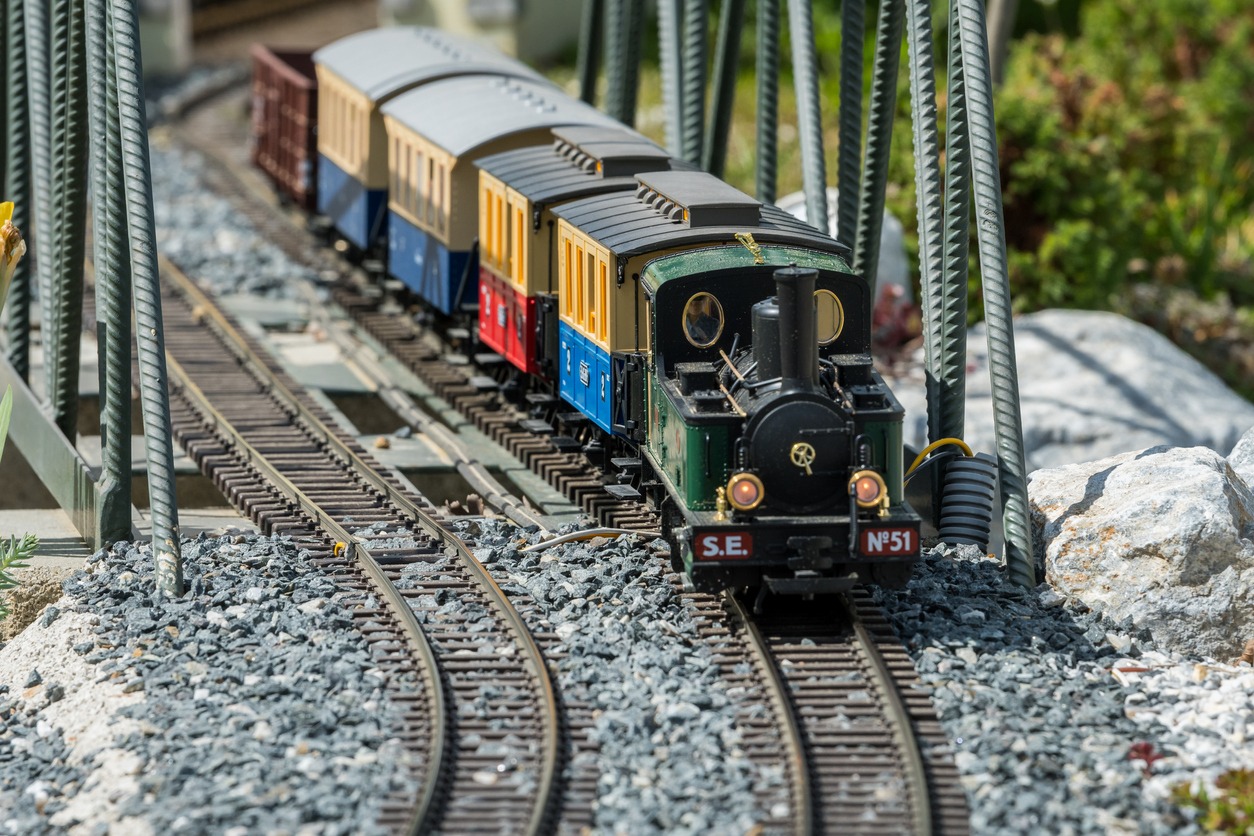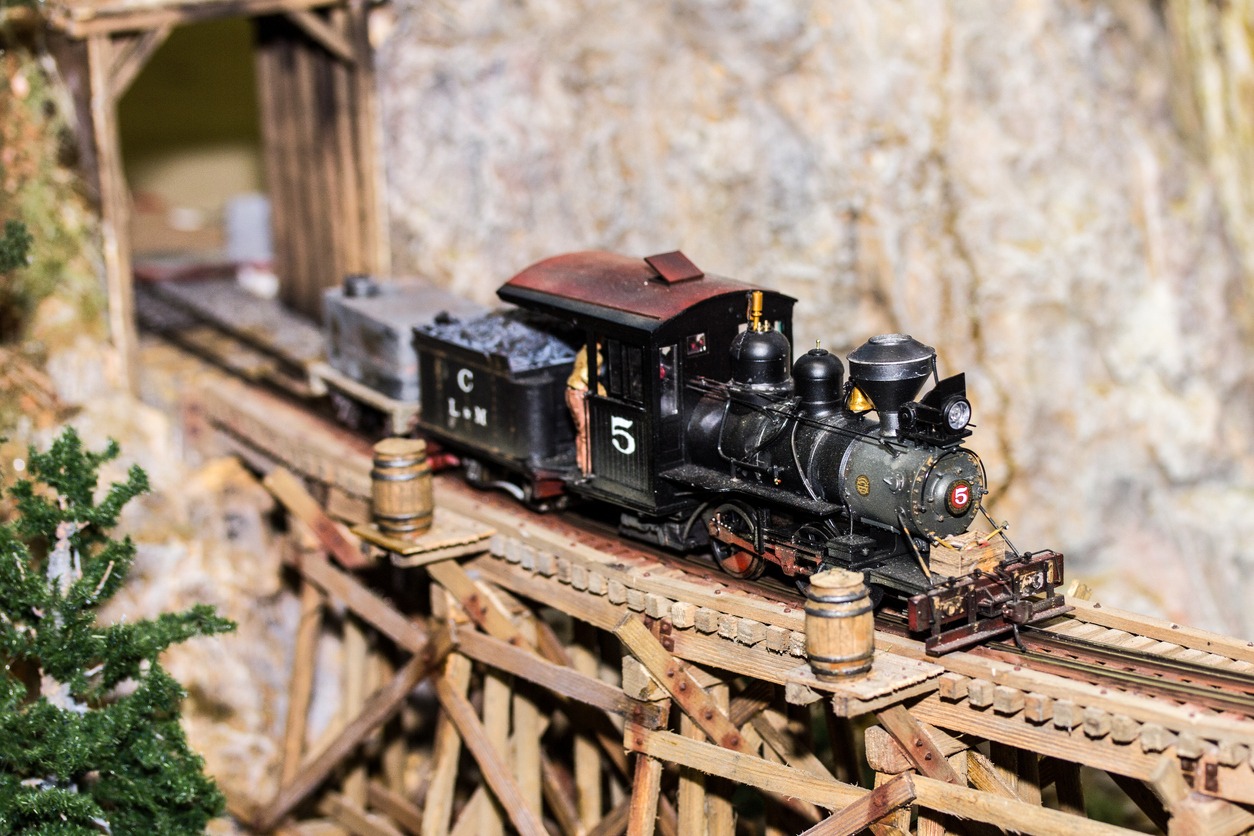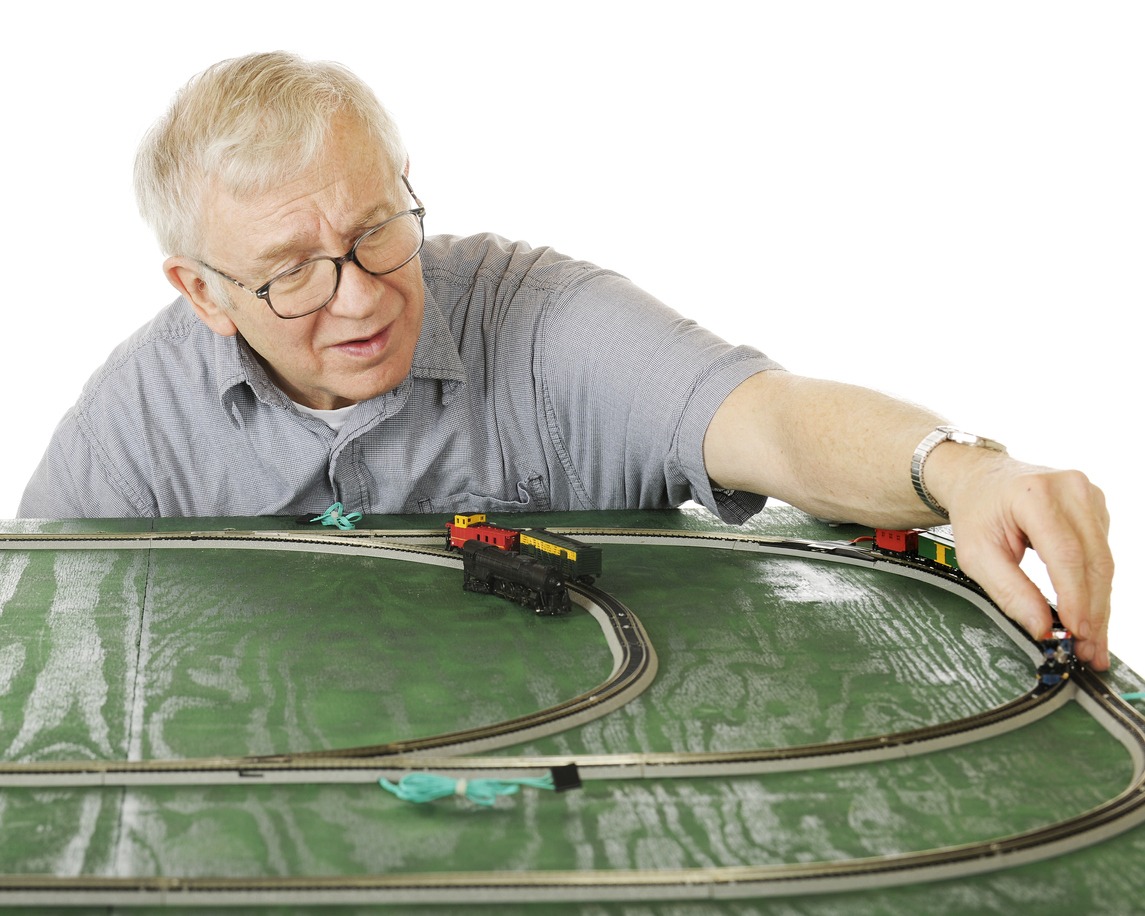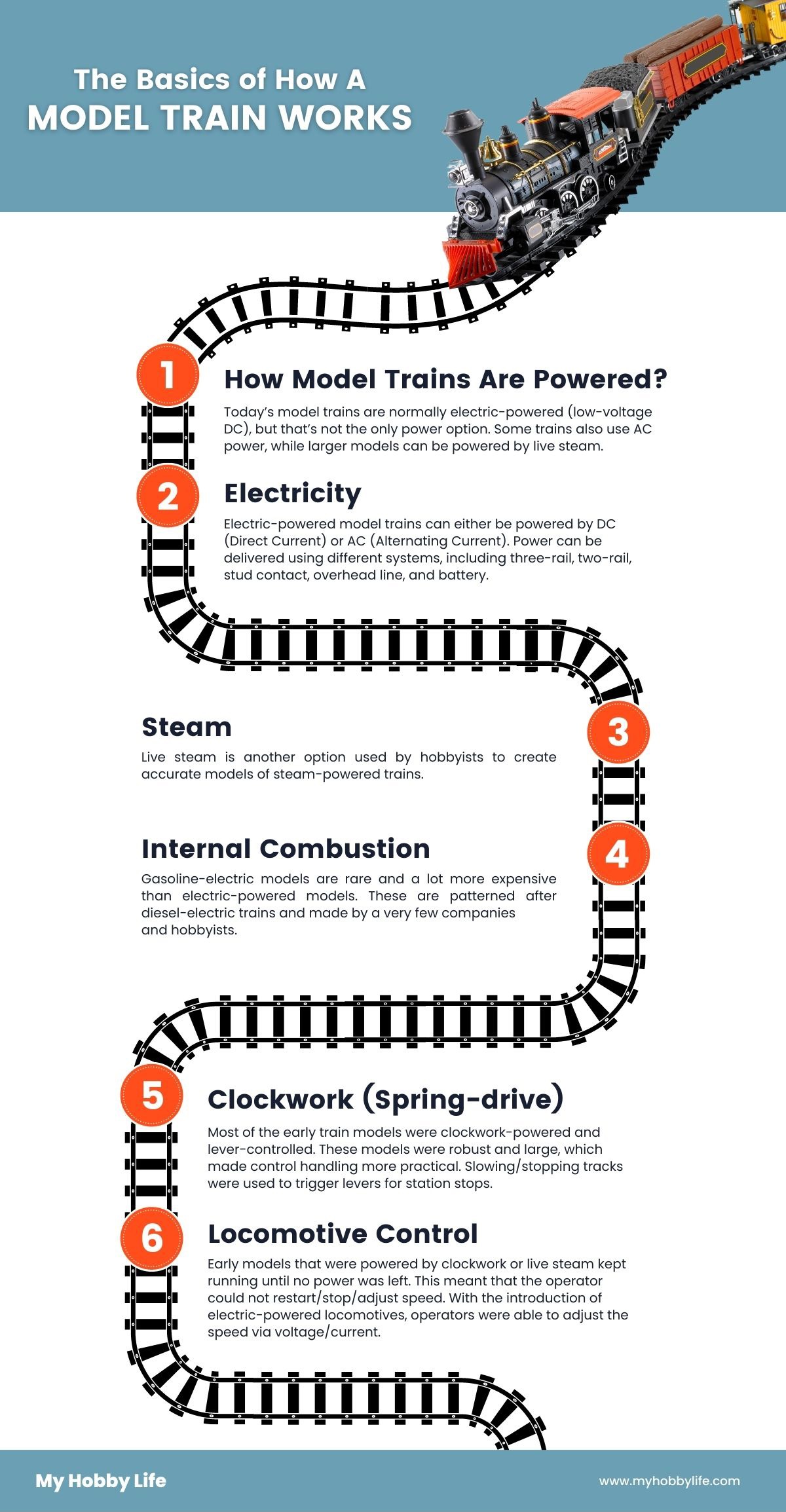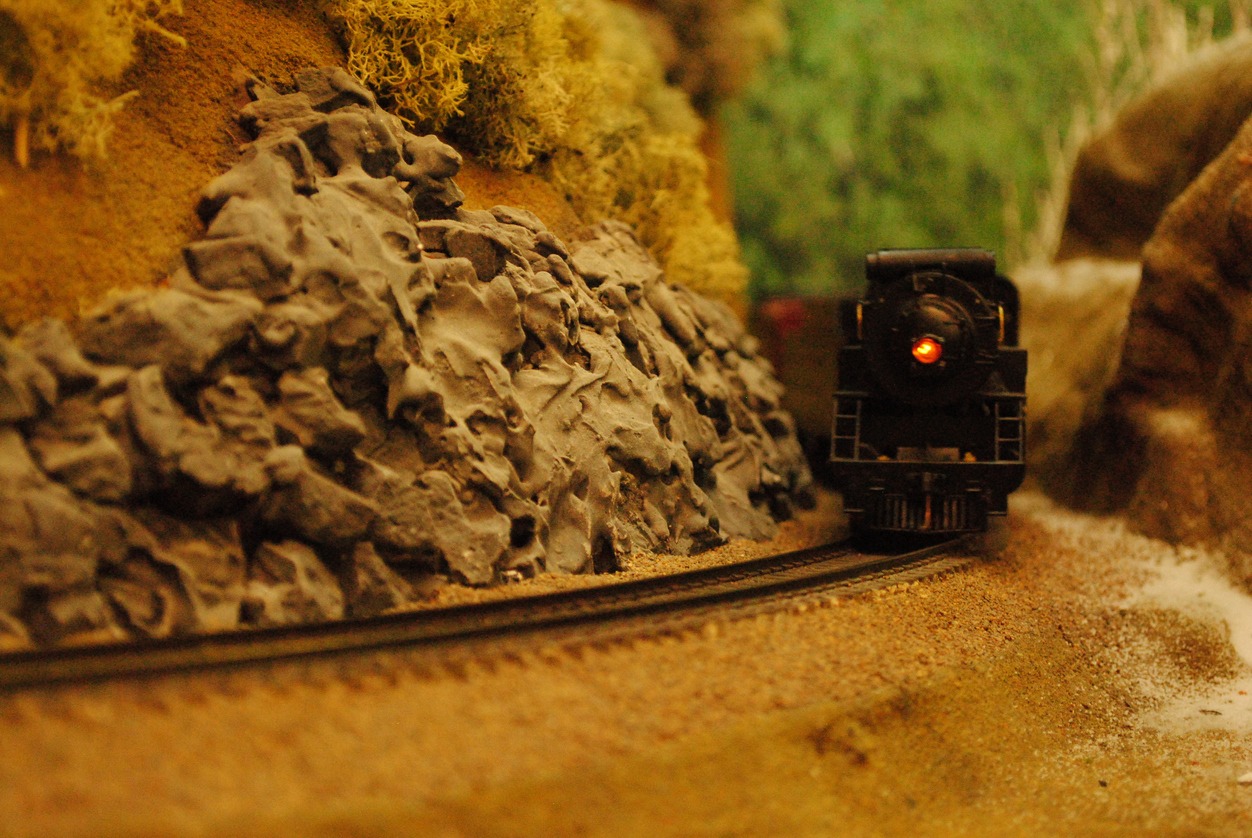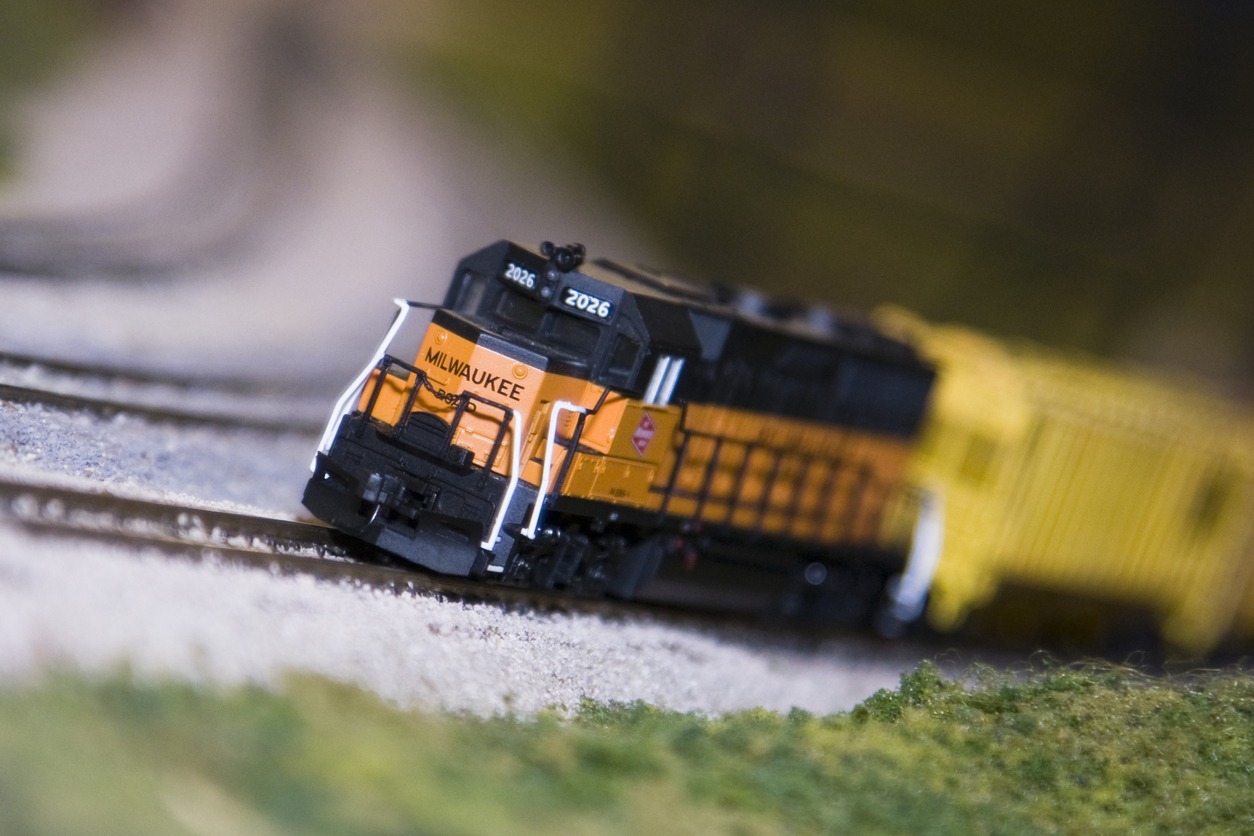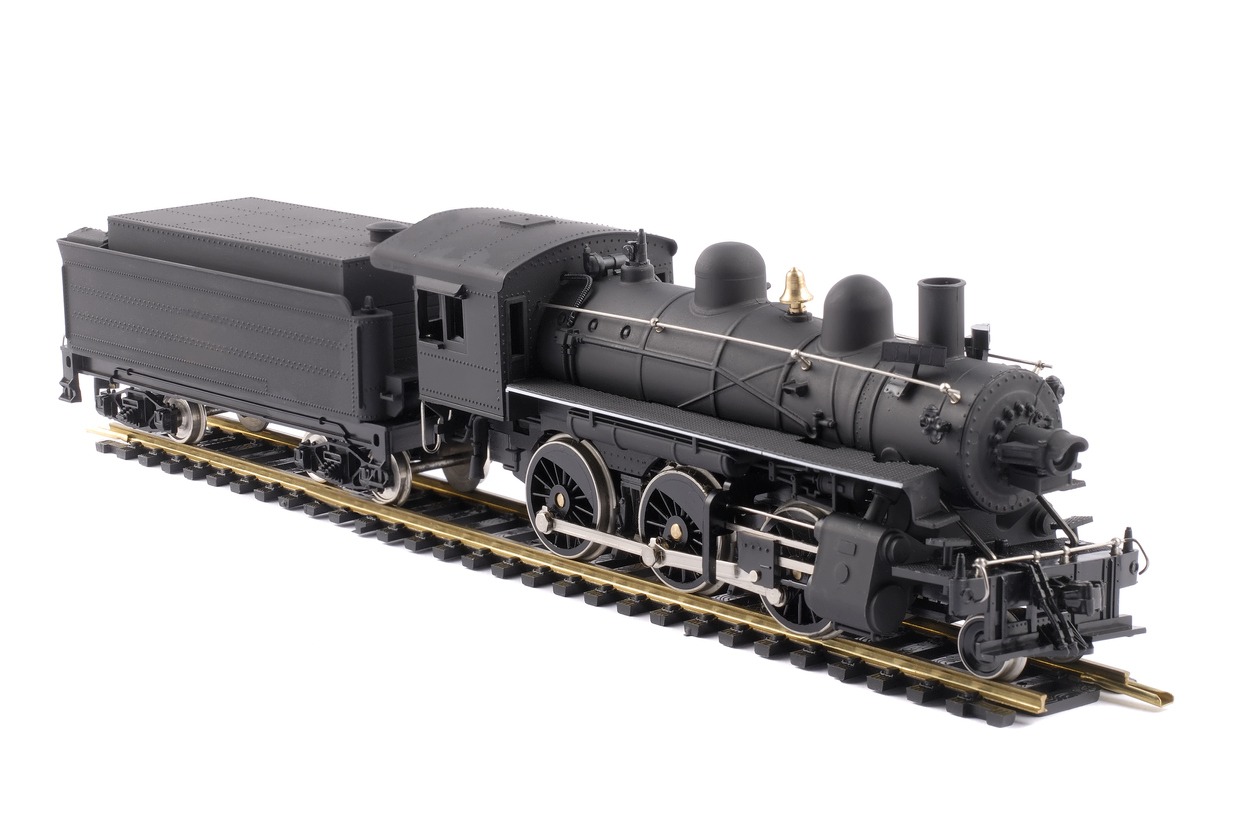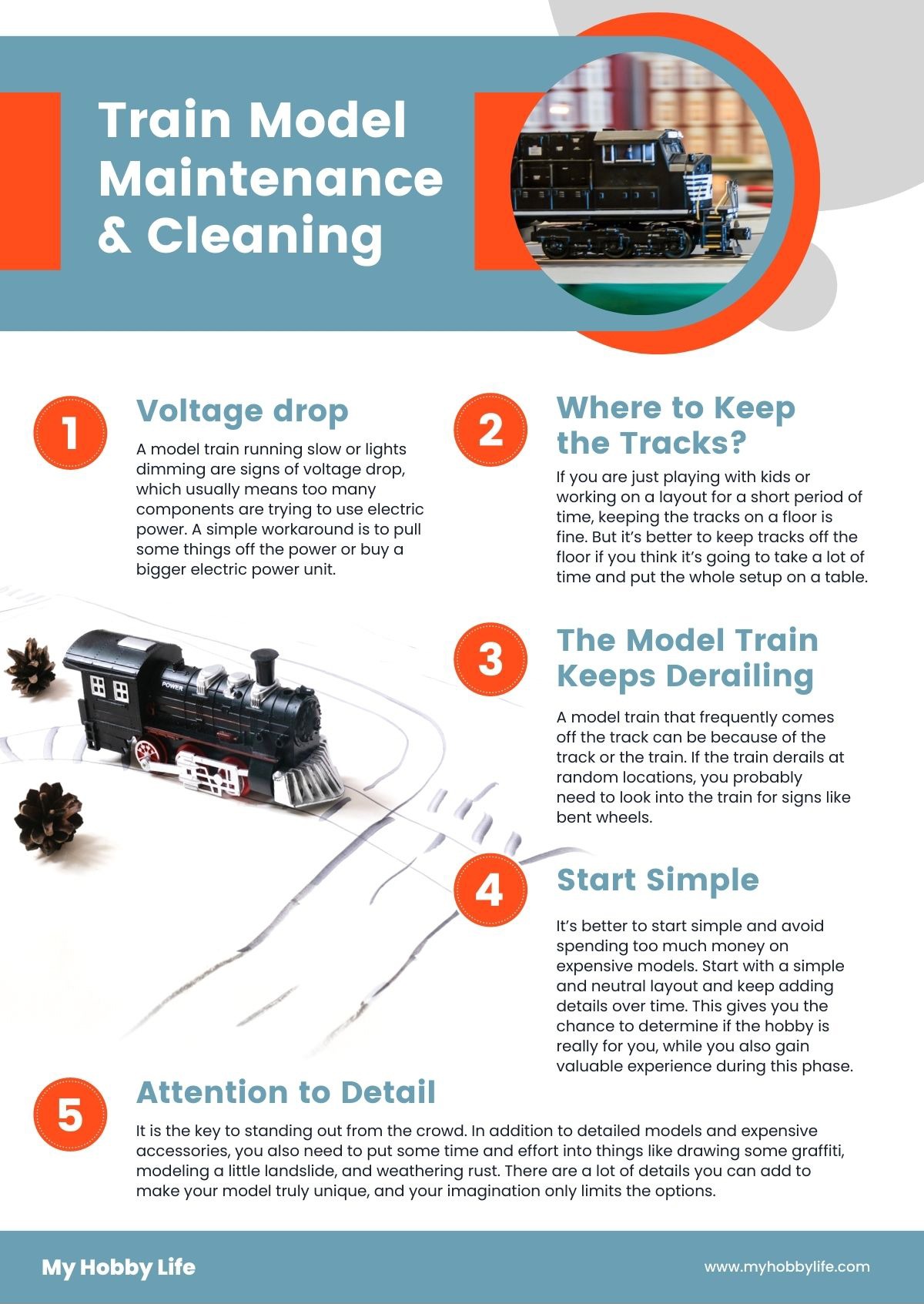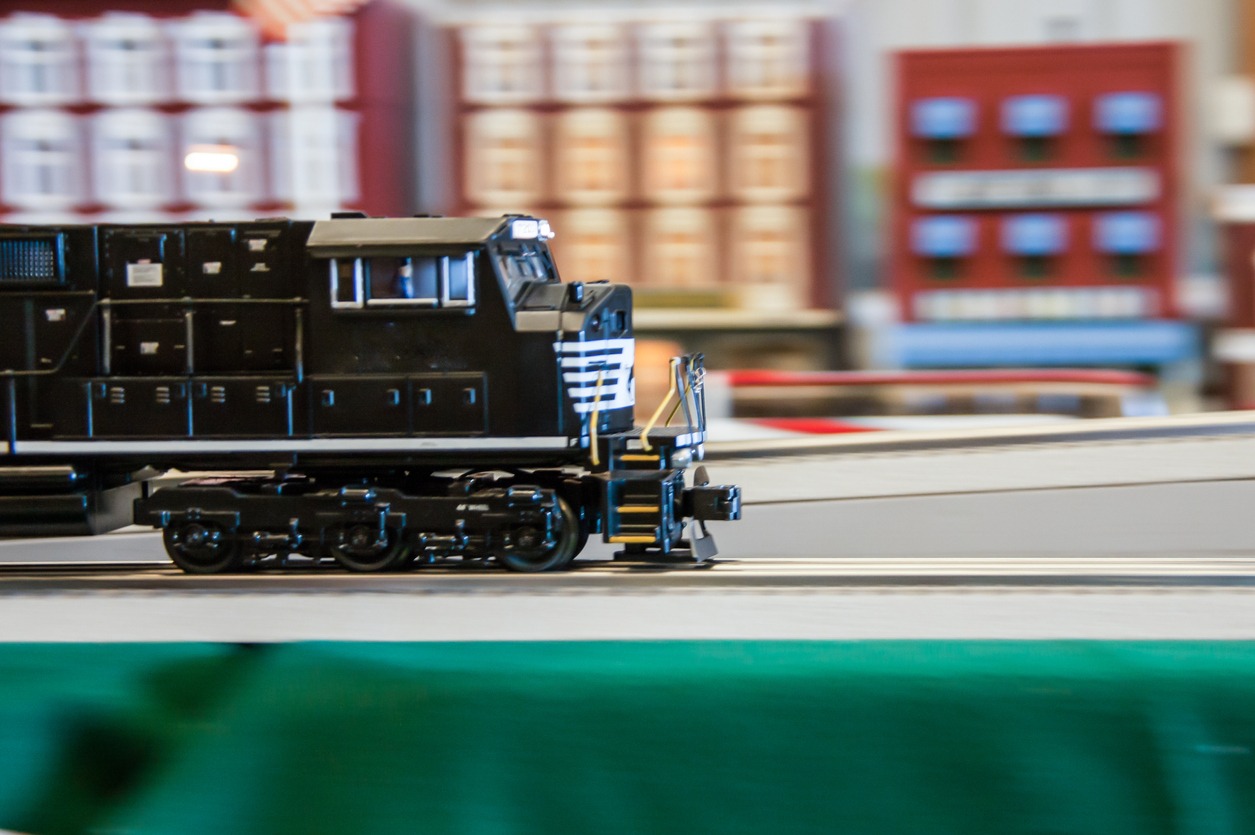Model trains are life-like and small versions of real trains, and building accurate and detailed layouts is an enjoyable hobby and a satisfying experience. Model trains and tracks can vary in size, style and shapes with average prices varying from $20 to a whopping $1,200. As a general rule of thumb, the higher the price, the more detailed models you are going to get. However, going for the cheapest options is usually not what we recommend and you should have at least a $100-200 budget for something decent.
The hobby is also called model railroading, railway modeling, and model railways. A modeled train kit can include a variety of scaled models of different components, including:
- Locomotives
- Passenger cars
- Rolling stock
- Mail cabins
- Tracks
- Streetcars
- Signaling
- Landscapes
- Roads
- Countryside
- Bridges
- Vehicles
- Buildings
- Urban landscape
- Lights
- Model figures
- Hills
- Rivers
- Canyons
- Tunnels
- Sounds
Hobbyists have different options ranging from buying readymade kits to spending large amounts of money and time on custom-made and highly detailed models. These models include not only the train and tracks but also an accurate representation of the scenery the train passes through. Some railroad modelers even have models that are large and spacious enough to ride on. The ultimate goal of some modelers is to build and run a railroad model as if it was a real one. Railway models range from circular or oval tracks to track-by-track representations of real places and historic maps.
A Brief History of Model Trains
Model trains and the hobby have been around since carpet railway trains were invented in the 1840s. These steam-powered trains did not have a track and ran across the floor/carpe, hence the name. Marklin introduced the first model train kit in 1891, which included tracks, trains, and other accessories like buildings and tunnels. Powered by clockwork, the first documented model train kit was built in 1859 (Railway of Prince Imperial) by Napoleon III for his 3-year-old son.
The hobby gained popularity in the 1920s, around which enthusiasts also shifted from steam-powered model trains to electric-powered tracks. Things only got better in the next 100 years with the advancements in technology. Model railways were not to a specific scale in the beginning, but different organizations came up with standardized scales with the passage of time. In 1940, NMRA standardized the model railway scale for the first time, which is still used in North America and some other countries.
With a 40 KM (25 miles) track, MiniaturWunderland is the world’s largest model railroad in Germany (in H0 scale 1:87). Established in 1910. The Model Railway Club is the oldest society or club (London), with over 5,000 periodicals and books.
Scales and Gauges
Beginners new to the hobby need to understand the scale and gauge, which define the size of model trains and tracks. Although there is some incompatibility between the UK/US models, things are not so complicated for the most part. The most notable organizations behind model railways are the NEM (MOROP-EU, NormenEuropäischerModellbahnen) and NMRA (National Model Railroad Association). Scale standards cover different aspects of building model trains, including rolling stock wheels, catenary, curve radii, loading gauge and slope grades.
Britain uses its own railway scale and rarely uses other internationally accepted standards. Foreign modeling companies operating there or local companies modeling prototypes for other countries are an exception. Countries like Japan also have their own scales, but they also use NEM and NMRA scales for exports.
Scale
A scale is defined as a ratio between two trains. For example, HO trains have a scale of 1:87, G scale trains are 1:22.5, and N scale trains are 1:160. Here 1 represents the actual train size, and the number coming after: represents that the model train is 87 times smaller (all dimensions).
N and Z scale model trains are tiny and much smaller than full-sized trains, which is roughly the size of your finger. G Scale model trains are considered to be too big for the indoors and are also known as Garden Trains. Although there are many model train scales, the most popular scales include:
- G Scale 1:22.5
- O-Scale 1:48 (USA)
- HO Scale 1:87
- N Scale 1:160
- Z Scale 1:220
You can find more details about model train scales and standards here on the Wikipedia page.
Gauge
The gauge represents the width of the track. In the case of the HO scale (1:87), the track gauge is normally 1.75 inches. A company might use a slightly different gauge, but in most cases, they’d mention this in the specifications. Some companies produce ‘narrow gauge’ tracks to reflect real-world trains better. However, despite the possible differences in gauge, the model trains themselves are built on standard ratios.
- G Scale 45mm
- Scale 31mm
- HO Scale 16mm
- N Scale 9mm
- Z Scale 6mm
The higher the scale, the smaller the gauge (higher scale = smaller trains = smaller gauge tracks)
Couplers and Connectors
Different couplers and connectors also exist in addition to scales and gauges, but most of them are not compatible with each other. Couplers are used to connect cars and although not fully compatible, they can be exchanged with all scales with varying levels of difficulty.
Landscaping and Weathering
Landscaping is considered to be an important element of railway modeling, and enthusiasts pay close attention to how to landscape the layout. Also known as scenery building and scenicking, landscaping involves using a wide range of materials to construct landscapes that are as accurate as possible (can also be based on a fantasy world). Different materials can be used to prepare a sub-terrain, such as a screen wire, cardboard strips, and styrofoam sheets.
As the name suggests, weathering refers to making a model look more realistic by stimulating wear and tear and dust. Unweathered models are more common (look new out of the box) because they are easier and cheaper to produce. It’s up to the hobbyist to weather their brand-new models. Accurate weathering also depends on where the original train was used. Weathering of desert trains will be different than urban trains. Some common weathering techniques include dry-brushing, air-brushing, breaking in, sanding, and using chemicals to artificially cause corrosion.
How Popular is this Hobby?
Train modeling is usually associated with older enthusiasts who have the time and money to make things work. However, the hobby is also popular among the youth, thanks to the mass production of model trains and decreasing prices. The hobby can be expensive and time-consuming, and that’s probably the main reason why it’s less popular than other less expensive and ‘quick-fix’ hobbies.
The craze comes and goes, which is also the case with almost any other hobby. Train modeling suits people who are not into short forms of entertainment and are willing to put their time and money into it. Despite these things, the train modeling community is still very strong, with events and meetups taking place regularly around the world.
The Basics of How A Model Train Works
So how do these model trains actually work? The answer can be pretty simple and complicated at the same time. Most of today’s model trains are electrically powered by a power unit, which is usually attached to the track and sends electricity to the model train. In simple words, the train will go forward/backward and change the speed based on the amps or power it is receiving. You need a model train, a train track, and a power unit to get started.
However, things can start getting complicated when DCC control systems are involved, which allow more input, can run multiple model trains, can go forward/backward, blow horn/whistle, speed up/slow down, control lights and do all sorts of other stuff.
How Model Trains Are Powered?
Today’s model trains are normally electric-powered (low-voltage DC), but that’s not the only power option. Some trains also use AC power, while larger models can be powered by live steam. The four ways of powering a model train include:
Electricity
Electric-powered model trains can either be powered by DC (Direct Current) or AC (Alternating Current). Power can be delivered using different systems, including three-rail, two-rail, stud contact, overhead line, and battery. Modern model trains normally supply electric DC power through the tracks, while DCC (Digital Command Control) systems generally use AC.
Battery-run trains are also common, but the size and capacity can vary significantly from one model to another. Larger batteries are used in garden railway models and bigger models that have enough space for installing rechargeable batteries and need more power/current draw.
Connecting two wires carrying an electric current to the track is the most common method to power electric model trains. Voltage and current vary depending on the complexity and size of a particular setup, but G and O scales usually run on around 18V, while Z and N scales run on 12V. DCC-powered model trains can take something between 22-25V for smooth operation.
Digital Command Control (DCC) kit is the middleman between the train track and the power unit. DCC model trains have a decoder with which the DCC module can communicate. These decoders understand digital messages the DCC systems send and can stop, slow, reverse, break and do other things. DCC allows operators to do much more than just start and stop a model train, but it also comes at a higher price.
Steam
Live steam is another option used by hobbyists to create accurate models of steam-powered trains.
Internal Combustion
Gasoline-electric models are rare and a lot more expensive than electric-powered models. These are patterned after diesel-electric trains and made by a very few companies and hobbyists.
Clockwork (Spring-drive)
Most of the early train models were clockwork-powered and lever-controlled. These models were robust and large, which made control handling more practical. Slowing/stopping tracks were used to trigger levers for station stops.
Locomotive Control
Early models that were powered by clockwork or live steam kept running until no power was left. This meant that the operator could not restart/stop/adjust speed. With the introduction of electric-powered locomotives, operators were able to adjust the speed via voltage/current. More complex throttles were introduced as technology advanced and with the introduction of rectifiers and transformers. DC-powered trains can move forward or backward simply by reversing the polarity.
Brands
When purchasing model trains, it is essential that you pay attention to the brand you are buying from is well-known for manufacturing high-quality train sets. Since model trains have a long history and have been around for decades, the top brands and manufacturers have changed. The top brands today are Hornby, Bachmann, and Lionel.
Hornby
Hornby manufactures OO and TT gauge trains under its brand and is particularly popular in the UK. Over the years, Hornby has acquired many international brands as well, so their model trains are sold worldwide. These companies include Lima, Arnold, Rivarossi, and Jouef.
Model Trains such as the Warner Brothers Harry Potter Hogwarts Express Electric Model Train Set and the Hornby The Flying Scotsman A1 Class 4472 OO Electric Model Train Set are designed to be excellent beginner train sets. They can be assembled by both beginners and experts.
The OO gauge trains from this brand are also compatible with older tracks, so you don’t need to upgrade your tracks if you purchase these. Additionally, they are an excellent value for the price and have expansion options available.
Bachmann
Bachmann model trains are usually O, HO, and N scales. Due to their variety of options, they are particularly popular in the United States. Most Bachmann rail sets, such as the Bachmann Rail Chief and the Bachmann Durango and Silverton, are designed to be ready to run. They also come with added accessories, which make them a delight to use. The manufacturers also include a speed controller, power pack, and an easy-to-follow instruction manual with most of their models. These added accessories make them perfect for beginners.
Lionel
Lionel model trains are extremely popular O-scale trains with many different sets available for you to buy. Some popular sets include the Lionel Santa Fe Super Chief and the Lionel Polar Express, designed to be easy to set up. The motors on these model trains are maintenance-free and come with Bluetooth connectivity and remote controls, which are some of its key features.
All the parts are made with precision, and the company has paid great attention to detail. For example, the cab interiors are illuminated, giving the trains a realistic look.
Getting Started with Train Modeling
The first step is to find a suitable spot with ample space for the model train layout you want to buy or build. The basement and garage are good spots as you can leave your models there for a long time without having to worry about others bumping into them. Keeping your setup on the floor for long periods of time means you risk damaging it, while it might also get dirty in no time.
The next step is to figure out which modeling scale you’ll use. For example, a G scale layout is more suitable for building a model in your garden, while HO is the most popular among hobbyists who have some space in a large room. Those who only have a space equivalent to a coffee table find Z or N scales more suitable. Next comes the theme i.e., the kind of trains you want to run and the scenery you want to build around it. This also includes other details, such as miniature versions of people, and it’s up to the hobbyist to include what they think is relevant.
Visiting your local hobby shop gives you a fair idea of what to expect and enables you to try out different models and have a friendly chat. Instead of spending a lot of money and later realizing that you want something different, it’s better to talk to someone experienced who can give you better advice. If you already know what you want, you can also consider buying model trains from online marketplaces such as Amazon or the manufacturer’s official website.
Building a model train is the fun part and allows you to build your own layout. Mistakes are expected in the beginning, but don’t let that discourage you from improving. Google and YouTube videos are a great starting point if you are not sure of anything specific.
Constructing Layouts and Adding Details
Layouts can be as complex and eye-catching as you want by adding mountains, sceneries, bridges, tunnels, and so on. Most model train manufacturers also produce these accessories. The most common materials used to build up the ground include polystyrene or hard foam because these materials can easily be carved and can be painted after adding some plaster of Paris.
But first, you need to determine where things would go, which should be a part of initial layout ideas. You might have to move things around a bit if you are adding details later. Just make sure that the train has enough clearance and the new objects won’t interfere with its movement.
Common Terminologies
There are a lot of terminologies associated with train modeling, but let’s go through some important ones as follows:
- Ballast: Gravel/rocks between rails
- All-in-one track: Complete track that also includes ballast and roadbed
- Code: height of a rail track, expressed in 1/1000 inch. E.g. Code 70 means 0.7-inch tall
- Sectional track: Pieces of straight and short tracks
- Flexi track: Like a bendable tape that you can lay down, more like a flexible sectional track
- Turnouts: Also known as switch, the part that allows the operator to switch between tracks
- Blocks: Electrically isolated track sections that are normally used to control the model train, including breaking and reversing
- Gantlet Track: Overlapping tracks that allow a model train to pass through narrow spaces like a tunnel, bridge or valley (share the same roadbed)
- Crossing: Track sections that cross another piece of track, roads etc.
- Roadbed: Under-track dirt buildup keeps the track up off the ground
- Yard: Refers to an area that has many track ends and where trains can be stored and sorted
- Caboose: Also known as the buggy, way car, cabin, and other names, caboose is the car at the back of a model train which carries the crew
- Coupler: The joining part that allows joining different trains, locomotives and cars
- Classification lights: The front lights show the type of a model train. E.g. white = extra train, green = another train section is still coming
- Deadhead: Usually referred to an empty passenger car attached to a train
- Helper: Locomotives that can be added to a train in different situations, such as climbing up a steep incline
- Head End Cars: Express, baggage, and mail cars, usually at passenger car’s front
- Slug: Weighted locomotive that has traction motors for extra traction in slippery conditions
- Unit: Refers to one locomotive (usually diesel)
- Throttle: Allows controlling the speed/direction
Deciding on the Time Period of a Model Train
Picking up the time period is a matter of personal preferences, but you can start with a slightly modern and neutral layout. 1800s wild west is a popular themed track and looks fine with trains of the 50s. However, a 1920’s setting with a modern train won’t go well together. In other words, somewhat older trains can be used in modern settings, but modern trains don’t look good in old settings. You also need to make sure that other details are cohesive, which can be a lot of work but worth it in the end.
Train Model Maintenance and Cleaning
Cleaning and maintenance are very important and integral parts of the hobby. It’s not that difficult if you make a habit of doing it, at least on a semi-regular basis. Here are some tips for keeping your model trains clean and well-maintained.
Wheels need the most attention because they get dirty easily and fast. Use a dampened (with isopropyl alcohol) cloth and lay it over a stretch of the sectional track. Run the train while holding the piece of cloth, which should clean the dirt without requiring you to do a lot of hard work.
Debris and gunk will also build up over time on the track, which in some cases, can even derail the train. A pair of tweezers make it easier to pluck out the grime/dirt, while you can also use isopropyl alcohol-dipped cotton buds to clean the track tops.
It is recommended to perform regular maintenance of locomotives, units, and cabs after every 100-hour run time, which is normally after 6 months. Common signs you need to do some oiling include loud noises (more than usual) and when you start hearing the friction between different parts.
You might also want to look around and search for information related to maintaining other parts of the layout. Things like static grass or other parts coming off /moving are specific issues and can usually be fixed pretty easily, but you need to research a bit online for what others who encountered the same issue say about it.
General Tips
Voltage drop
A model train running slow or lights dimming are signs of voltage drop, which usually means too many components are trying to use electric power. A simple workaround is to pull some things off the power or buy a bigger electric power unit.
Where to Keep the Tracks?
If you are just playing with kids or working on a layout for a short period of time, keeping the tracks on a floor is fine. But it’s better to keep tracks off the floor if you think it’s going to take a lot of time and put the whole setup on a table. This saves the setup from kids, pets, and people knocking over bits, while it’s also a lot easier to do it earlier than moving the finished setup later on.
The Model Train Keeps Derailing
A model train that frequently comes off the track can be because of the track or the train. If the train derails at random locations, you probably need to look into the train for signs like bent wheels. If it comes off the track at the same spot, then something might be wrong with that part of the track, which mostly happens because of a very sharp bend.
Start Simple
It’s better to start simple and avoid spending too much money on expensive models. Start with a simple and neutral layout and keep adding details over time. This gives you the chance to determine if the hobby is really for you, while you also gain valuable experience during this phase. You can gradually increase the complexity and details, but trying to do it all at once might not be a good idea for beginners.
Attention to Detail
It is the key to standing out from the crowd. In addition to detailed models and expensive accessories, you also need to put some time and effort into things like drawing some graffiti, modeling a little landslide, and weathering rust. There are a lot of details you can add to make your model truly unique, and your imagination only limits the options.
FAQs
What scale model trains are the best?
HO scale trains are the most popular trains bought in the US and Canada. Their scale ratio is 1:87, which makes them the perfect size to have at home and collect. HO-scale trains are also the most widely available. These trains are large enough to see finer details but are also small enough to be modeled at home.
Are HO and OO the same scale?
OO and HO scales are the most popular sizes for model trains. Both use the same gauge of tracks, which is 16.5 millimeters, but OO models are slightly larger than HO since HO stands for half O.
What is the biggest model train scale?
The biggest model train scale is the G scale, which is 1:22. These model trains run on a gauge of 1.75 inches. This is the largest scale you can find, making them suitable to be used outdoors in your garden.
Conclusion
It’s your own unique model train, and what you can create is only limited by your imagination. That’s the best thing about train modeling. You have all the freedom to build your own layout, locomotives, and landscape and add all the details you want. Train modeling is a hobby that brings joy and is a rewarding experience. Model trains are exciting to view, and experiencing an old-time train weaving through the scenic landscape is a unique experience. Building railroads is not that hard, but it takes time, financial resources, and a flair of creativity to build stunning layouts and close-to-real model trains.
